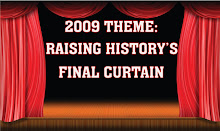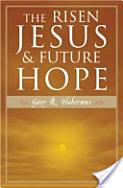Dots, Lines, and Circles
Generally speaking there are three theories of time chaotic, cyclical and linear. According to William Strauss and Neil Howe, authors of The Fourth Turning: What the Cycles of History Tell Us About America's Next Rendezvous with Destiny, chaotic time was the dominant view of primitive man.(1) As history unfolded changes in how humanity viewed time occurred. Ancient and traditional civilizations replaced chaotic time with a cyclical paradigm while modern Western societies particularly America, have conceptualized time in linear terms, according to Strauss and Howe.(2)
Before we can construct a workable historical model, we must first understand the differences in how time and therefore history have been conceptualized. These divergent views regarding time can be summarized by looking at three geometric shapes: dots, circles and lines. Please consider the following explanations of each model along with their corresponding illustrations.
Chaotic Time = Dots
According to the chaotic view of time, human events are random resulting in the notion that history has no path. As a result, any attempt to impute meaning or causal linkages between events is futile. "This was the first intuition of aboriginal man, for whom change in the natural world was utterly beyond human control or comprehension."(3) Chaotic time can be compared to a bunch of random dots on a piece of paper. Without lines connecting the points they remain random and meaningless in relation to each other. The notion of pathless time can still be found in many eastern religions. For example, Buddhism teaches when one reaches Nirvana, the religions ultimate goal, he is free from any connection to space, time, or selfhood.(4)
Despite the endurance of chaotic time in some religious worldviews this model possesses serious shortcoming as a historical paradigm. First, chaotic time's disregard for cause and effect relationships dissolves society's connective tissue. Without cause and effect, people cannot be held morally culpable for their poor choices or to any system of moral or societal obligations. Even Buddhists who aspire to attain a state where time is meaningless are nevertheless bound to an orderly world of cause and effect in this life through the doctrine of karma.(5) Consequently, chaotic time has never gained much traction as an explanatory historical model.(6)
Cyclical Time = Circles
From the perspective of human viewpoint, eventually ancient civilizations linked observable natural cycles such as lunar months and solar years with related cycles of human activity.(7) Strauss and Howe offer the following explanation of how cyclical thinking conquered the randomness of chaotic time in classical societies. They write:
Cyclical time conquered chaos by repetition, by the parent or hunter or farmer performing the right deed at the right moment in the perpetual circle, much as an original god or goddess performed a similar deed during time's mystical circle. Eventually, great cycles came to mark the duration of kingdom and prophecies, to coming of heroes and shamans, and the aging of lives, generations, and civilizations. Cyclical time is endless, yet also endlessly completed and renewed, propelled by elaborate rituals resembling the modern seasonal holidays.(8)
As the name implies, cyclicality is best diagramed with a circle representing the doctrine of Eternal Return. Eternal Return is the notion that the universe has been recurring and will continue to recur in a similar form for an infinite number of times.(9)
Unlike the chaotic view, cyclical thinking enabled classical civilizations to adopt a moral and legal dimension. As a result, present generations possessed a mechanism whereby they could compare their life experiences with those in previous generations. While cyclical time offers apparent advantages over chaotic time as an explanatory model it still offers no explanation for where time and history are headed. For this reason pure cyclicality alone is unacceptable for Bible believers because Scripture clearly teaches that time is advancing forward towards a prophesied climax.
Linear Time = Lines
Beginning with Judaism a new paradigm for understanding time began to emerge. Driven by theological ideas time and history were straightened out into a model that possessed an absolute beginning as well as an absolute end. "Time begins with a fall from grace; struggles forward in an intermediate sequence of rails, failures, revelations, and divine interventions; and then ends with redemption and reentry into the kingdom of God."(10) Initially, linearism struggled to gain a foothold in the ancient world: however, with the onset of the Protestant Revolution linearism became the predominant historical paradigm in Western Europe and eventually the United States.
The great achievement of linear time has been to endow mankind with a purposeful confidence in is own self-improvement. "A linear society defines explicit moral goals (justice, equality) or material goals (comfort, abundance) and then sets out deliberately to attain them. When those goals are reached, people feel triumphant; when they aren't new tactics are applied."(11) Consequently, the Industrial Revolution cemented linearism as the preferred historical paradigm. In fact, it was during the Industrial period, that Marxian philosophy described the future of humanity without God. According to Karl Marx, history would end with the dictatorship of the proletariat rather than righteous governance of Jesus Christ in heaven and on earth as the Christian view of history teaches.
Thus, having ruled out chaotic time and pure cyclical time alone as workable models, in our next posting we will focus our attention on the details of both the cyclical and linear views of history as well as begin exploring how they might be combined into a single workable paradigm.
Endnotes:
- William Strauss and Neil Howe. The Fourth Turning: What the Cycles of History Tell Us About America's Next Rendezvous with Destiny. (New York: Broadway Books, 1997), 8.
- Ibid., 8.
- Ibid., 8.
- Robert S. Ellwood and Barbara A. McGraw. Many Peoples, Many Faiths: Woman and Men in the World Religions. (Upper Saddle River, NJ: Prentice Hall, 2005), 138.
- Strauss and Howe. The Fourth Turning. 8.
- Ibid., 8.
- Ibid., 8.
- Ibid., 8.
- Mark T. Gilderhus. History and Historians: A Historiographical Introduction. (Upper Saddle River, NJ: Prentice Hall, 2000), 51.
- Ibid., 9.
- Ibid., 11.


























2 comments:
Okay, got the foundation of the three time models...now the reconciliation of cycle and line. (Seems I've hear of "circular reasoning" also, to add into the mixture, which might match the two models of time itself.) Thanks for a good study.
Linda,
We are getting there. I just started today working on a brief history of cyclical time and the Chrsitian view of history. Readers need to know how the linear view of time developed as a historical paradigm. I am trying to be complete. Thanks for the encouragement.
Bryan
Post a Comment